Practice Areas
At Cerebral Chiropractic Center, we specialize in conditions that are strongly linked to dysfunctions in the craniocervical junction. Below are some of the primary areas we treat—click on any condition to learn more about our approach. If you don’t see your condition listed, you’re welcome to reach out through our contact form, and our doctors will review your case and help connect you with the right care.
List of Services
-
HeadachesList Item 1
Many headaches trace back to the upper neck, where small misalignments can irritate the trigeminal nucleus, restrict blood flow, or overstimulate sensitive nerves. These hidden connections explain why “triggers” set you off while others remain unaffected.
-
MigrainesList Item 2
Migraines often begin in the brainstem, where the trigeminal nerve meets the upper neck and amplifies pain signals. Subtle changes in this area can set off the chain reaction that keeps migraines coming back.
-
DizzinessList Item 3
Dizziness isn’t always about the inner ear—it can start when the upper neck interferes with how the vestibular nucleus in the brainstem interprets balance signals. That mismatch can leave the world feeling unsteady.
-
VertigoList Item 4
Vertigo can arise when the upper cervical spine disrupts communication between the brainstem and balance centers. Even slight misalignments here can trick your brain into feeling like the room is spinning.
-
Balance Issues
The brain relies on clear messages from the spine and vestibular system to keep you upright. When the craniocervical junction is misaligned, those messages get scrambled, and balance becomes a daily challenge.
-
POTS
In POTS and other forms of dysautonomia, pressure at the upper neck can interfere with blood flow, vagus nerve function, and even the brain’s ability to regulate the heart and circulation. This is why so many of the symptoms feel unpredictable and overwhelming.
-
Pressure in the Head
Head pressure often builds when jugular vein drainage from the brain is restricted at the craniocervical junction. The resulting backup can create the heavy, foggy sensation that medications rarely explain.
-
Brain Fog
Brain fog may stem from reduced blood and cerebrospinal fluid flow caused by subtle shifts in the upper neck. When the brain isn’t getting proper circulation or clearance, clarity and focus quickly fade.
-
Ménière’s Disease Write a description for this list item and include information that will interest site visitors. For example, you may want to describe a team member's experience, what makes a product special, or a unique service that you offer.
-
Trigeminal Neuralgia
Trigeminal neuralgia is frequently connected to irritation of the trigeminal nucleus at the base of the brainstem. Subtle shifts in the upper cervical spine can fire up this pain center, sending lightning-like shocks across the face.
-
Concussion & mTBI
After a concussion, the craniocervical junction is one of the most vulnerable regions, where injury can disrupt blood flow, cerebrospinal fluid drainage, and brainstem signaling. These hidden problems often explain why symptoms linger long after the impact.
-
Depression
Depression isn’t always just “in the mind”—reduced blood flow and disrupted nerve signaling from the upper neck to the brainstem can play a powerful role. This overlooked connection may explain why mood changes so often accompany chronic head and neck problems.
-
Neck Pain
Neck pain is more than sore muscles—it often signals deeper instability at the craniocervical junction. Because so many nerves, blood vessels, and brainstem pathways pass through this small area, even slight misalignments can create widespread effects.
-
Occipital Neuralgia
Occipital neuralgia often begins where the greater occipital nerve exits the upper neck. Misalignment here can irritate or compress the nerve, sending stabbing pain from the back of the head toward the eye.



